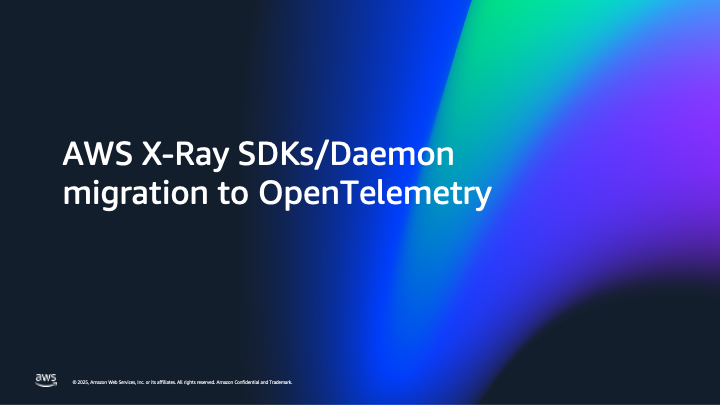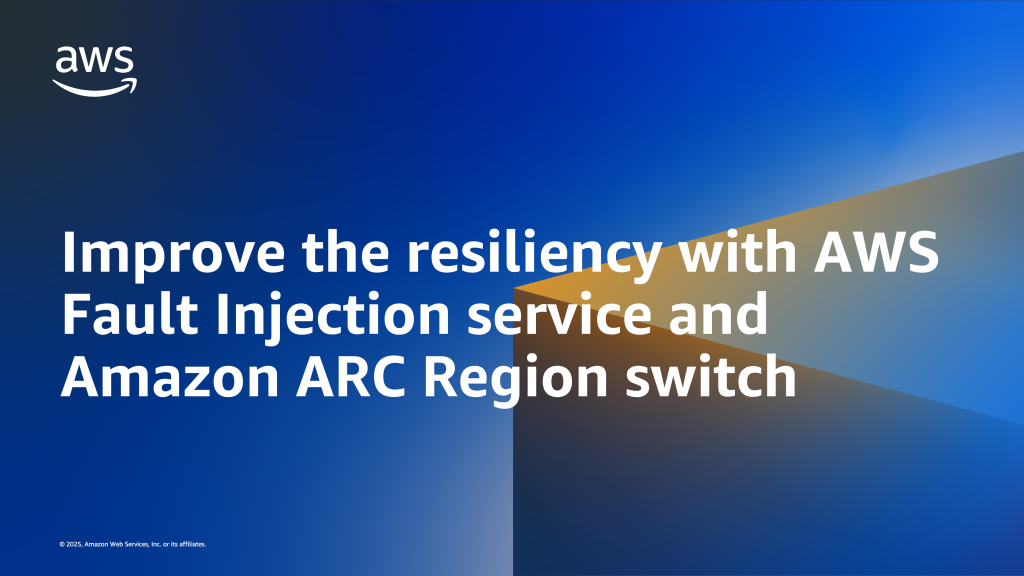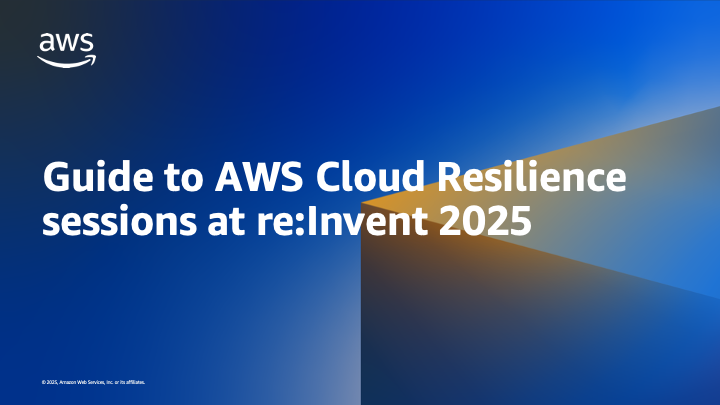AWS Cloud Operations Blog
Category: Developer Tools
Resolve application issues autonomously with AWS DevOps Agent (Preview) and Dynatrace
Application issues require fast resolution to maintain business continuity and customer satisfaction, but manual investigation creates delays that can cost organizations significantly in lost revenue and productivity. Last week, we launched AWS DevOps Agent (Preview), a frontier agent that resolves and proactively prevents incidents, continuously improving reliability and performance of applications in AWS, multicloud, and […]
AWS X-Ray SDKs/Daemon migration to OpenTelemetry
AWS X-Ray is transitioning to OpenTelemetry as its primary instrumentation standard for application tracing. OpenTelemetry-based instrumentation solutions are recommended for producing traces from applications and sending them to AWS X-Ray. X-Ray’s existing console experience and functionality continuous to be fully supported and remains unchanged by this transition. OpenTelemetry is the industry-wide open-source standard for tracing […]
Improve the resiliency with AWS Fault Injection service and Amazon ARC Region switch
System impairments occur frequently in distributed cloud environments, making application resilience critical for customers. While traditional disaster recovery testing approaches are often manual and time-consuming, modern chaos engineering practices help validate your application’s ability to handle failures automatically. Amazon Application Recovery Controller (ARC) simplifies application recovery across AWS Regions and availability zones by providing readiness […]
Guide to AWS Cloud Resilience sessions at re:Invent 2025
If you’re attending AWS re:Invent with the goal of learning how to prevent costly downtime for your organization, you can look forward to more than 150 breakout sessions, workshops, chalk talks, builders’ sessions, and code talks that will help you improve the resilience of your critical applications. New this year, we’ll also be hosting two […]
Learn from AWS Fault Injection Service team’s approach to Game Days
In today’s digital world, availability and reliability are crucial competitive advantages. For DevOps and SRE teams, the ability to respond quickly and effectively to incidents can mean the difference between a minor issue and a major disruption of service that impacts millions of customers. Teams must have clear-cut runbooks and appropriate observability to be ready […]
Using Amazon Bedrock and Amazon Nova for AI-Powered Incident Response
In today’s cloud-native world, incident response teams face overwhelming challenges. When critical applications fail, engineers must sift through mountains of observability data across multiple services; all while under intense pressure to restore service quickly. This manual correlation process is time-consuming, error-prone, and often delays resolution, resulting in extended outages and frustrated customers. Traditional monitoring tools […]
Simulating partial failures with AWS Fault Injection Service
Modern distributed systems must be resilient to unexpected disruptions to maintain availability, performance, and stability. Chaos engineering helps teams uncover hidden weaknesses by deliberately injecting faults into a system and observing how it recovers. While traditional testing validates expected behavior, chaos engineering tests system resilience during failures. AWS Fault Injection Service (AWS FIS) is a […]
Best practices for utilizing AWS Systems Manager with AWS Fault Injection Service
Introduction In today’s cloud-centric world, ensuring the resilience of mission-critical applications is paramount. The ability to withstand and recover from unexpected failures, including degradation of cloud provider services, can mean the difference between seamless operation and costly downtime. This is where the powerful combination of AWS Systems Manager (SSM) and AWS Fault Injection Service (AWS […]
Tracing ETL Workloads using AWS X-Ray and AWS Distro for OpenTelemetry
Introduction Data pipelines are essential for modern data-driven companies to gain critical business insights. However, data pipelines commonly fail when new files or datasets from data sources do not conform to the expected schema, leading to downstream job failures, workflow breakdowns, and delayed insights. Additionally, fluctuating data volumes, from a few gigabytes to multiple terabytes, […]
Scaling AWS Fault Injection Service Across Your Organization And Regions
In the first two parts of our series, we explored how to scale AWS Fault Injection Service (FIS) across AWS Organizations. Part one focused on implementing FIS in a single AWS account environment, introducing the concept of standardized IAM roles and Service Control Policies (SCPs) as guardrails for controlled chaos engineering experiments, particularly in centralized […]









